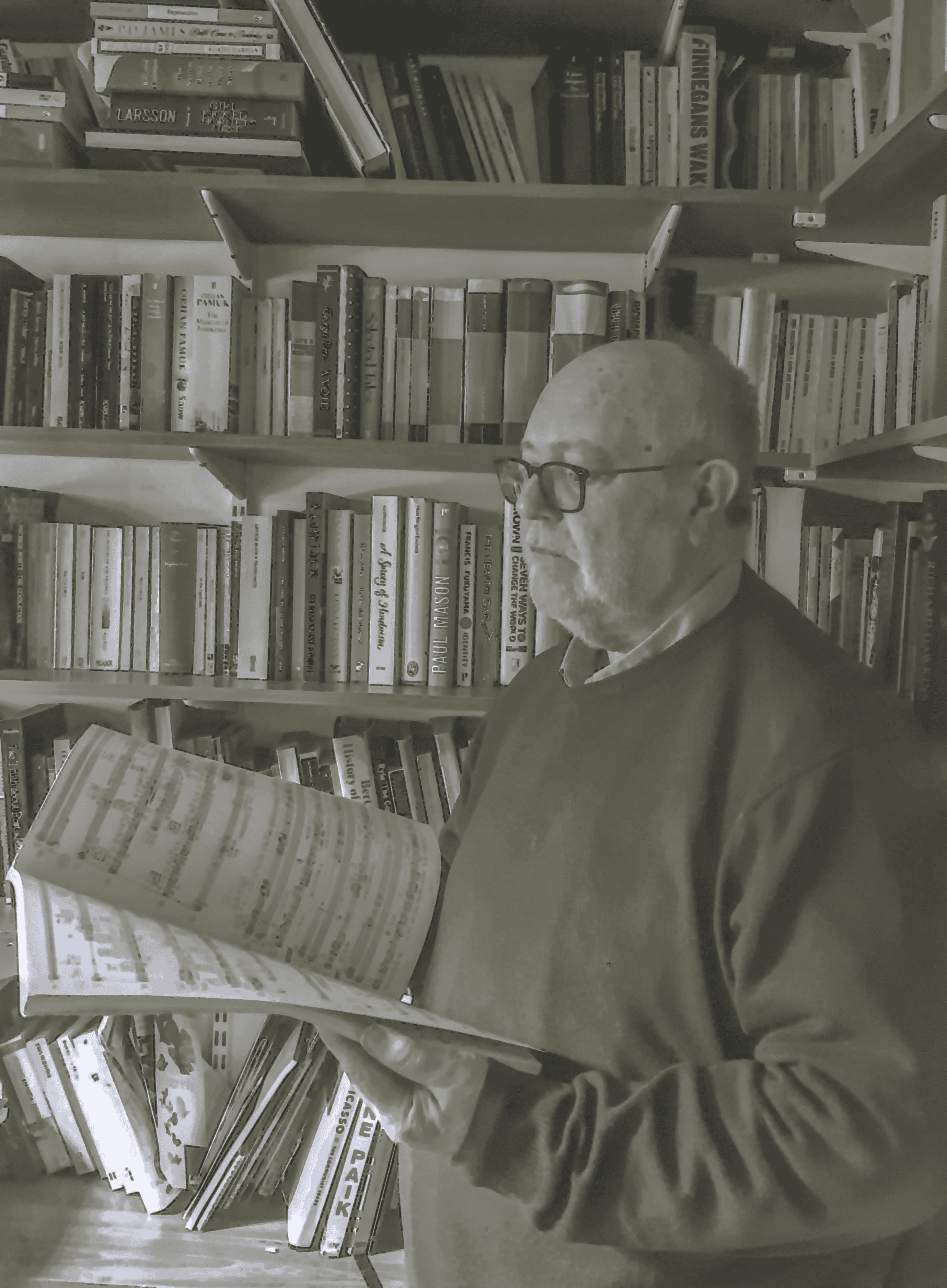Robin Hartwell’s musings on music theory, composition & analysis
A Thought Occurred: I Will Write Something - Soon ...
Robin Hartwell received his early training in music as a choirboy in London, where his choirmistress was the composer Betty Roe. He went on to study at the Universities of Reading, Southampton and Sussex. His composition teachers include Andrew Burn, Christopher Wintle, Jonathan Harvey and Hugh Wood. Most of his working life was spent as a university lecturer in music, the larger proportion at Liverpool Hope University. He has published on Rhythm in Webern, Postmodernism, Stockhausen’s Licht, and Music and Sacred Space.

Robert Hartwell
As a composer he has produced an intermittent stream of works in different mediums, including solo piano, chamber music, orchestral music (including concertos for the trumpet and the piano), music theatre and electroacoustic works. A continuing strand within these works has been the exploration of theoretical musical topics in the service of musical expression. In recent years he has been involved in improvised and semi-improvised music.


Disclaimer:
This research is made available for public access and peer review, but Robin Hartwell retains full ownership of any and all intellectual property, media resources and text, and should be formally accredited for any references to, or use of, these materials.
Beethoven First Symphony:
An analyst’s quest for unity


This essay on Beethoven’s First Symphony is an attempt to see if the four movements of the work had a common topic. The initial question is framed in terms of motivic unity, and the way motifs are transformed in the different movements. This leads into an investigation of the fundamentals of the tonal language and its role in making an integrated artwork.
The study relies on a close reading of the score and the cross-relations within it. It was felt that one test of the strength of an argument is the prevalence of the elements within the work, which greatly expanded the intended length of the essay. The alternative would have left the argument open to the charge of ‘cherry-picking’ evidence. The intent here is to provide enough evidence for the reader to agree or disagree with the conclusions of the writer.
A decision was made to restrict the boundary of the discussion close to the limits of the piece itself. There is no examination of the historical context or the psychology of the composer, nor is there a discussion of the analytic literature and how it relates to the methodology adopted here. The disadvantages in doing this are great. However, there are two big advantages. One is that the text itself ought to be comprehensible to anyone with just the basic understanding of music theory. The other is that the text, while long, is not vast. In any event it seems defensible that a first stage in thinking about the work ought to be a consideration of the work itself (in so far as it can ever be thought of as an autonomous object) and this provides an image of the work to be examined in many different contexts. One can regard this essay as an element of a fuller study.
The essay retains the sense of exploration of the score together with the doubts and pleasures experienced in the process of investigation. The author found that this analytic approach led to some surprises for him, including some ‘unknown unknowns’. He hopes that the reader will be as engaged and entertained by the process of investigation as he was.
© Robin Hartwell. Liverpool, 2024.
